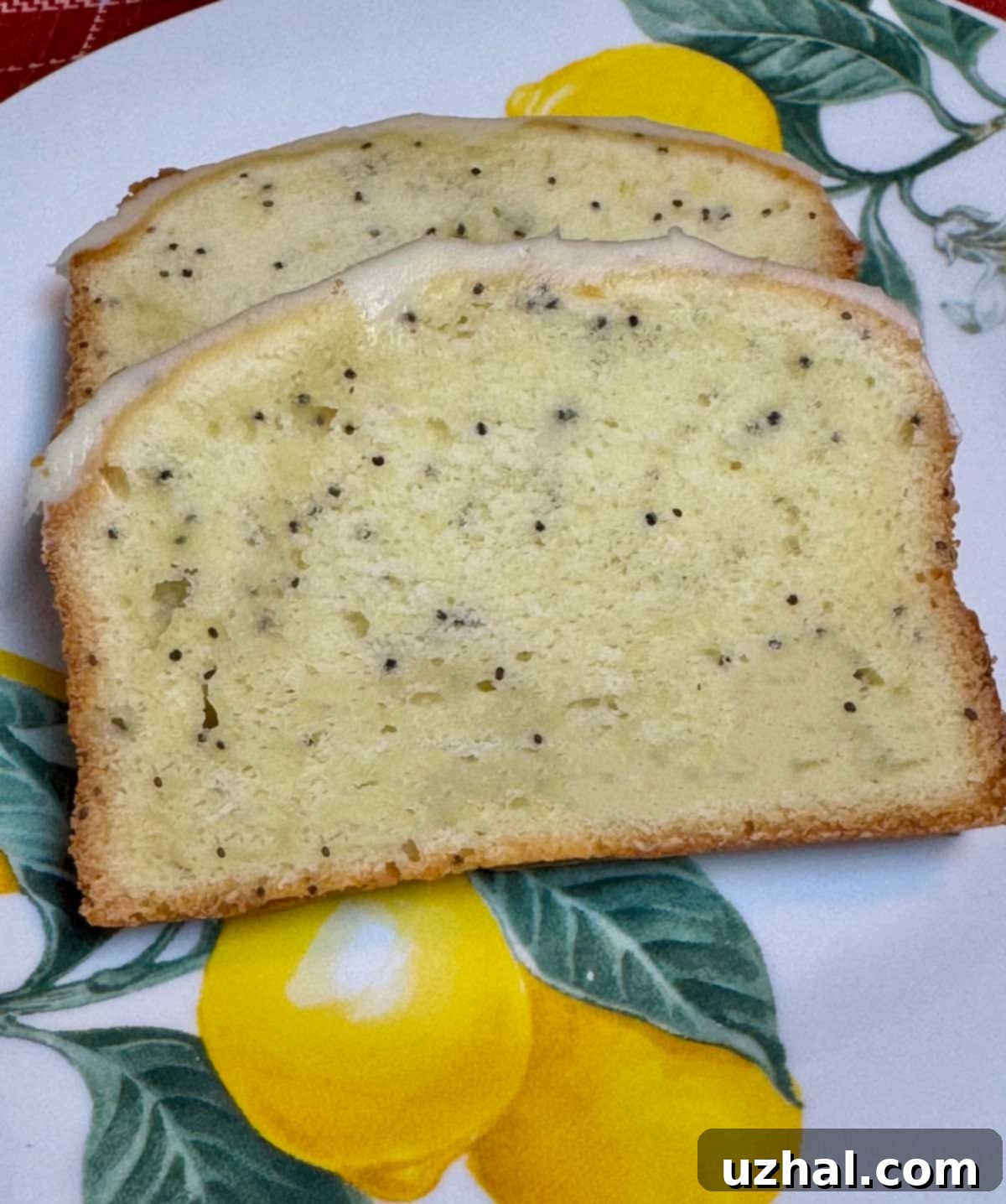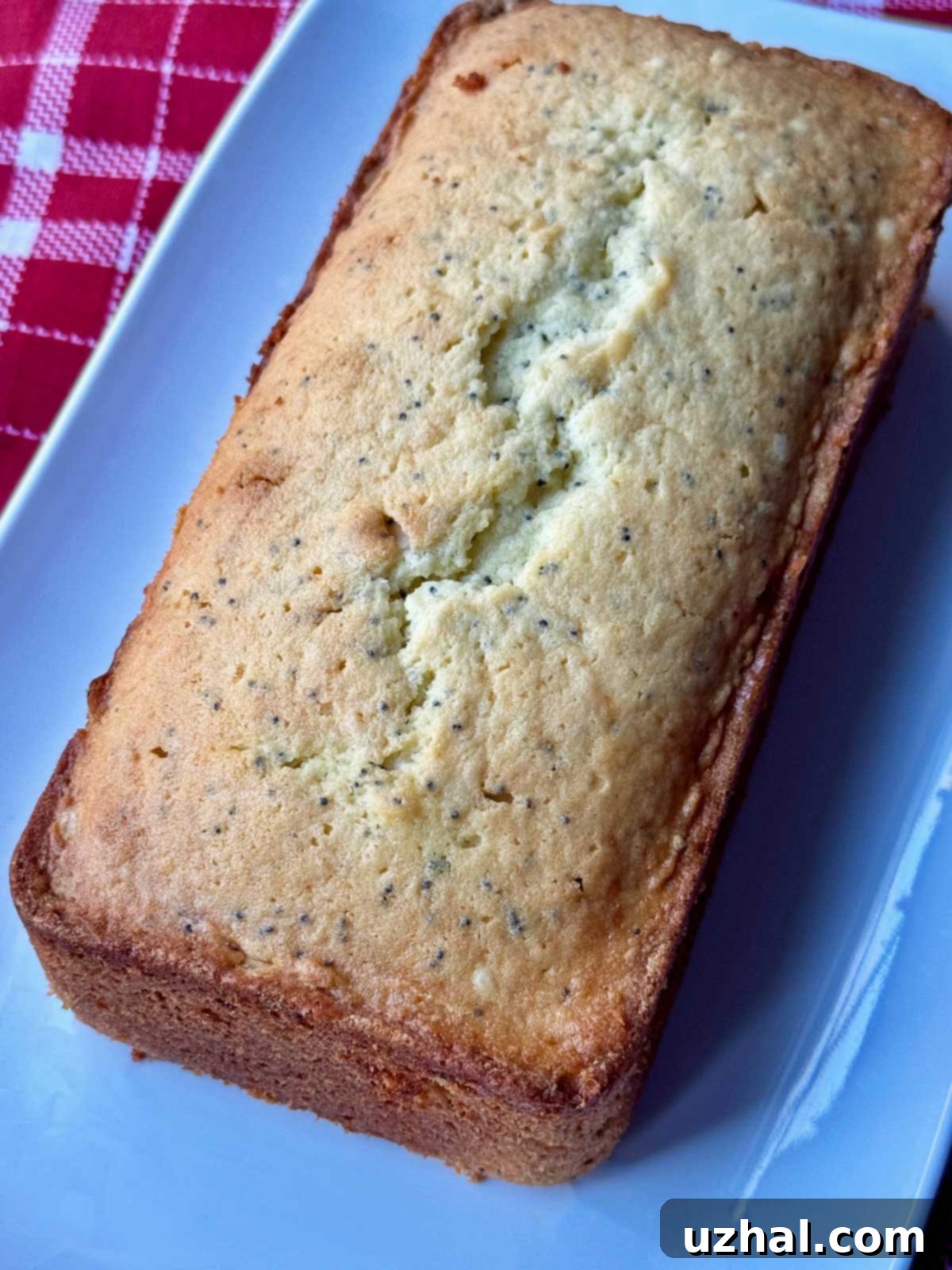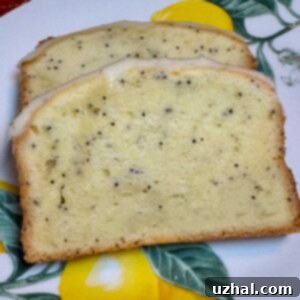The Ultimate Lemon Greek Yogurt Pound Cake: A Recipe for Unrivaled Moistness & Flavor
There’s a special joy that comes from baking, especially when inspiration strikes from unexpected places. This delightful Lemon Greek Yogurt Pound Cake was born out of a perfect storm of culinary curiosity and a fantastic find: the captivating stories from a baking blog and a generous coupon for a large carton of yogurt! I found myself completely engrossed in Sarah’s “30 Cakes in 30 Days,” a fascinating series penned by an American baker living in England. Her eloquent descriptions and mouth-watering photos of cakes instantly ignited a powerful craving for something sweet and comforting. Shortly after, a coupon for a big tub of yogurt magically appeared – and who can resist a freebie these days? Seizing the opportunity, I promptly put that yogurt to excellent use, transforming these inspirations into what has become a beloved recipe.

Lemon Greek Yogurt Pound Cake: Why the Name Change?
While this recipe began as an adaptation from a yogurt company’s website (a link that, unfortunately, no longer exists), it has since undergone several enhancements to perfect its texture and flavor profile. Initially, I referred to it as “Lemon Yogurt Pound Cake” due to its vibrant lemon zest and fresh lemon juice. However, as I continued to refine the recipe and explore its potential, it became clear that the true star, and the ingredient providing its exceptional moistness and tender crumb, is the Greek yogurt. Therefore, “Lemon Greek Yogurt Pound Cake” is a more accurate and descriptive name, highlighting the foundation of its superior texture.
This cake is incredibly easy to make, yet it consistently delivers an exquisitely delicious result. It boasts a perfectly tender crumb that almost melts in your mouth, complemented by a beautifully golden, slightly crisp crust. What makes this pound cake truly stand out is its adaptability. While the lemon flavor is a timeless classic, the Greek yogurt base serves as an ideal canvas for a myriad of flavor variations. You could omit the lemon entirely and infuse it with almond extract for a sophisticated twist, or simply enhance the vanilla for a pure, comforting experience. The possibilities are endless, making this recipe a versatile addition to any baker’s repertoire.

Elevating Flavor: The Art of Soaking Poppy Seeds
Since its initial creation, I’ve had the pleasure of baking this cake numerous times, often experimenting with delightful additions. In one of my more recent batches, I decided to incorporate poppy seeds, a decision that proved to be a fantastic textural and flavor complement. Through this experimentation, I uncovered a simple yet impactful trick: soaking poppy seeds for about 15 minutes before adding them to your batter. This small but crucial step significantly softens the seeds, preventing them from feeling gritty in the finished cake, and, more importantly, it helps to release and enhance their subtle, nutty flavor. You can easily soak them in water, milk, or even a bit of diluted yogurt, ensuring they are well-drained before folding them into your mixture.
Adapting the Recipe: Making a Smaller Loaf
This recipe, as written, is perfectly suited for a standard 8 ½ by 4 ½ inch or 9×5 inch loaf pan, yielding a generous cake ideal for sharing or enjoying over several days. However, if you’re baking for a smaller household, or simply prefer a more modest portion, it’s incredibly simple to adjust. You can effortlessly halve all the ingredients to create a delicious smaller loaf. For this reduced quantity, a small 8×4 inch loaf pan works wonderfully. Remember that when adjusting the size, the baking time will also need to be modified. A smaller loaf will typically bake faster, so keep a close eye on it and rely on the doneness tests described below.
Achieving Pound Cake Perfection: Essential Baking Tips
Crafting the perfect pound cake, especially one as moist and flavorful as this Lemon Greek Yogurt Pound Cake, involves a few key techniques and ingredient considerations. Here are some essential tips to ensure your cake turns out beautifully every time:
- Choose Your Flour Wisely: If you can find a soft wheat flour, such as White Lily, I highly recommend using it. Unlike regular all-purpose flour, which typically has a higher protein content, soft wheat flour is milled from a different type of wheat and results in less gluten development. This characteristic is paramount for achieving that signature ultra-tender, delicate crumb that makes a pound cake truly exceptional. The difference in texture is noticeable and worth the effort if you can source it.
- Sift Your Flour for Lightness: Even if your flour isn’t particularly lumpy, sifting is a beneficial step. It aerates the flour, which helps in creating a lighter texture for your cake, and ensures that all dry ingredients are evenly distributed. If you’re using White Lily flour, which can sometimes be more prone to clumping due to its fine texture, sifting becomes even more crucial.
- Weigh Your Ingredients for Accuracy: For consistent and professional baking results, especially with flour, measuring by weight is far more accurate than by volume. A cup of flour can vary significantly in weight depending on how it’s packed. Using a kitchen scale to weigh your flour (and other ingredients like sugar and butter) eliminates these discrepancies, ensuring your batter has the perfect ratio for optimal texture.
- Embrace Room Temperature Ingredients: This tip is critical for a smooth and emulsified batter. Room temperature butter creams beautifully with sugar, incorporating air more efficiently. Room temperature eggs and yogurt also blend seamlessly into the mixture, preventing the batter from curdling or separating. When all ingredients are at a similar temperature, they combine to form a homogeneous batter, which translates to a finer, more even crumb in your baked cake.
- Cream Butter and Sugar Thoroughly: This step is often overlooked but is foundational to a great pound cake. Creaming butter and sugar together for an adequate duration – typically 3-5 minutes – isn’t just about combining them. It’s about incorporating air into the mixture, which creates tiny pockets that expand in the oven, giving the cake its structure and a light, fluffy texture. In my personal baking journey, I used to cut this step short because the noise of my stand mixer was unbearable due to my hyperacusis. However, discovering a remote control outlet was a game-changer! It allowed me to start my mixer from another room and let it cream for the full recommended time. The improvement in the texture and lift of my cakes was truly remarkable, a testament to the importance of this technique. You can clearly see the difference when comparing the first picture of this cake to older attempts.
- Trust Your Senses for Bake Times: Oven temperatures and baking times can vary, so always treat the recipe’s bake times as a suggestion. Instead, rely on the aroma of a fully baked cake filling your kitchen and the visual cue of a golden-brown top. The most reliable test for doneness is the wooden skewer test: insert a wooden skewer into the center of the cake. If it comes out with moist crumbs attached (not wet batter), your cake is perfectly baked and ready to be removed from the oven. For reference, this specific Lemon Greek Yogurt Pound Cake was consistently done in exactly 1 hour and 15 minutes in my oven.
- Serve with Freshness: Pound cake provides a wonderful “blank canvas” for various toppings. It’s particularly fantastic when served simply with a dollop of freshly whipped cream and an assortment of fresh seasonal fruits. Berries, sliced peaches, or a vibrant citrus compote can elevate this classic cake into an elegant dessert, perfectly showcasing the flavors of the season.
- The Farm Brownies aka Bake Ahead Brownies
- Small Batch Greek Yogurt Brownies
- Greek Yogurt Brownies with Self-Rising Flour
- Fanny Farmer Chocolate Chip Cookies
- Pineapple Yogurt Muffins
Recipe

Lemon Yogurt Pound Cake
Anna
Pin Recipe
Ingredients
- 2 cups all purpose flour (260 grams, preferably soft wheat flour like White Lily for best texture)
- ¼ tsp. baking soda
- ¼ tsp. baking powder
- ½ teaspoon salt
- 12 tablespoons unsalted butter (170 grams, softened to room temperature)
- 1 ⅔ cups granulated sugar (330 grams)
- 4 large eggs room temperature
- 1 tsp. vanilla extract (use ¾ tsp if using vanilla yogurt)
- ⅔ cup plain or vanilla whole milk Greek yogurt (room temperature)
- 3 Tbs. fresh lemon juice
- 2 tsp. lemon zest (finely grated)
- 3 tablespoons poppy seeds (optional) (soaked for 15 minutes and drained if using)
Optional Cream Cheese Glaze
- 2 ounces softened cream cheese
- 1 tablespoon unsalted butter
- 1 pinch salt
- ⅛ teaspoon vanilla extract
- ½ cup powdered sugar
- ¼ teaspoon lemon juice (plus a little zest, optional)
Instructions
-
Preheat your oven to 325 degrees F (160 degrees C). Thoroughly grease and flour a 9×5 inch loaf pan, ensuring it’s evenly coated to prevent sticking.
-
In a medium bowl, whisk together the measured flour, baking soda, and baking powder. Stir in the salt until all dry ingredients are well combined.
-
In a large mixing bowl, using a stand mixer or hand mixer, cream the softened butter until smooth. Gradually add the granulated sugar, beating on medium-high speed until the mixture is light, fluffy, and pale in color (this typically takes 3-5 minutes, allowing ample air incorporation).
-
Reduce the mixer speed to medium. Add the large eggs one at a time, beating thoroughly after each addition until fully incorporated. Stir in the vanilla extract.
-
In a separate small bowl, gently mix together the Greek yogurt, fresh lemon juice, and finely grated lemon zest. If you are including the optional poppy seeds, add them to this mixture as well. Gradually add the dry ingredients and the lemon-yogurt mixture alternately to the egg mixture, beginning and ending with the dry ingredients. Mix on low speed just until the dry ingredients are moistened and no streaks of flour remain. Be careful not to overmix. Pour the batter evenly into the prepared loaf pan. Bake for 1 hour 15 minutes, or until the cake is lightly golden brown and a wooden skewer inserted into the center comes out with moist crumbs.
-
Allow the pound cake to cool in the pan on a wire rack for 10 minutes before carefully inverting it onto the rack to cool completely.
Cream Cheese Glaze (Optional)
-
In a small bowl, beat together the softened cream cheese and butter until smooth. Gradually add the powdered sugar and stir until just blended. Once combined, beat on medium speed for 1-2 minutes until light and fluffy. Stir in the vanilla extract and, if desired, a touch of lemon juice and zest for an extra bright flavor. Drizzle over the cooled pound cake.
This Lemon Greek Yogurt Pound Cake truly embodies the best of homemade baking: it’s simple to prepare, yet sophisticated in its taste and texture. The inclusion of Greek yogurt guarantees an incredibly moist crumb and a subtle tang that beautifully complements the bright zest of lemon. Whether you serve it plain, with a delicate dusting of powdered sugar, or adorned with fresh fruit and whipped cream, it’s sure to be a crowd-pleaser. We encourage you to try this recipe and experience the delightful results for yourself. Happy baking!
